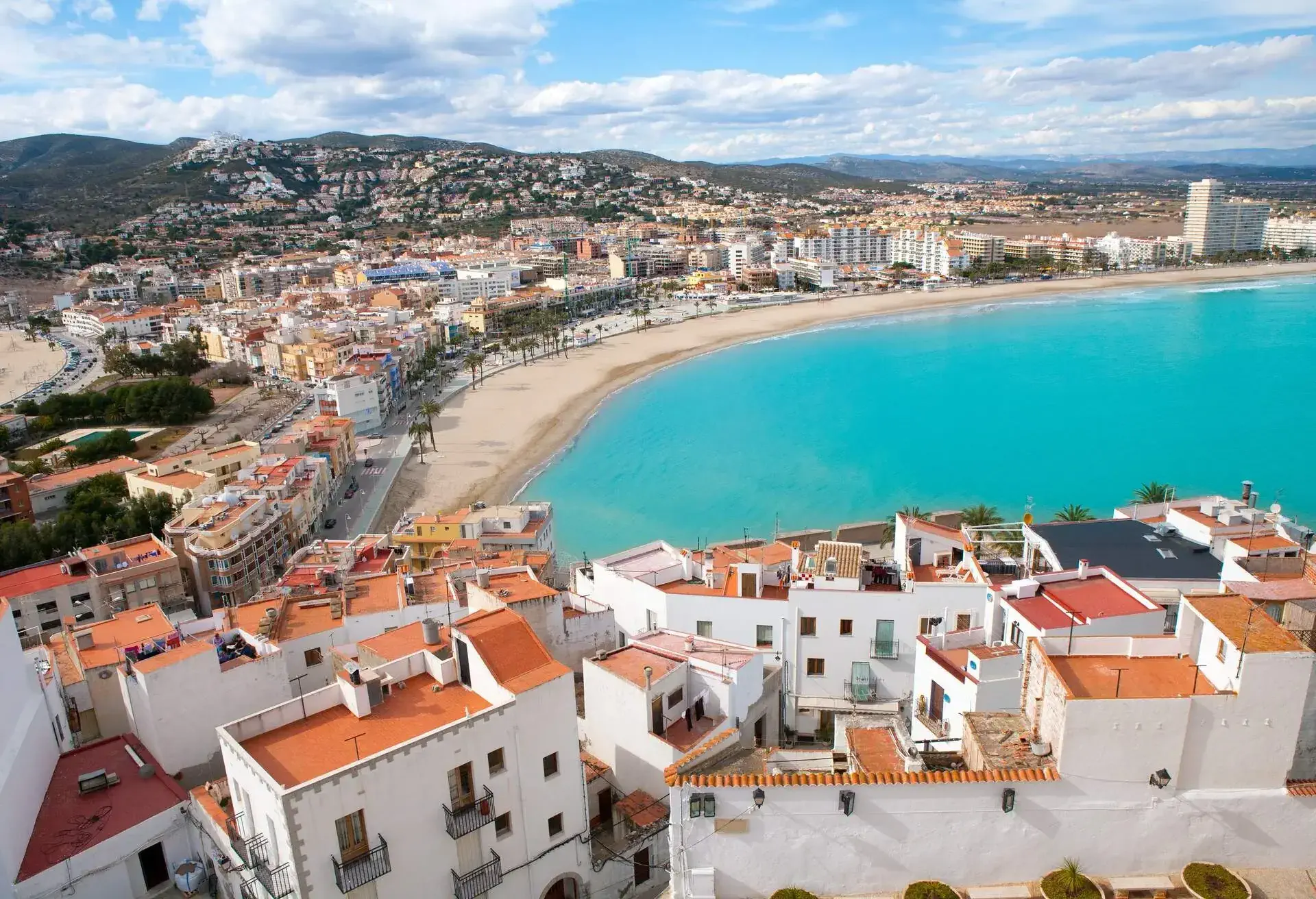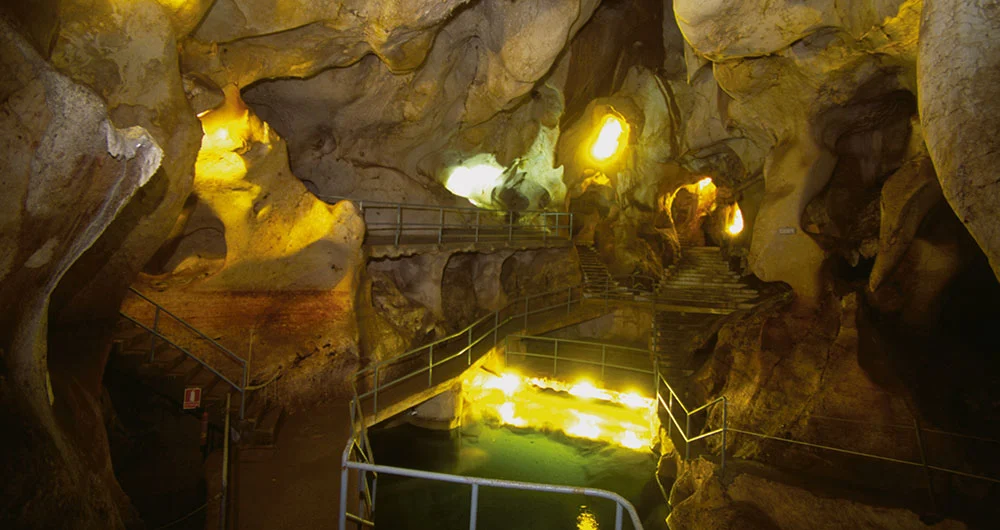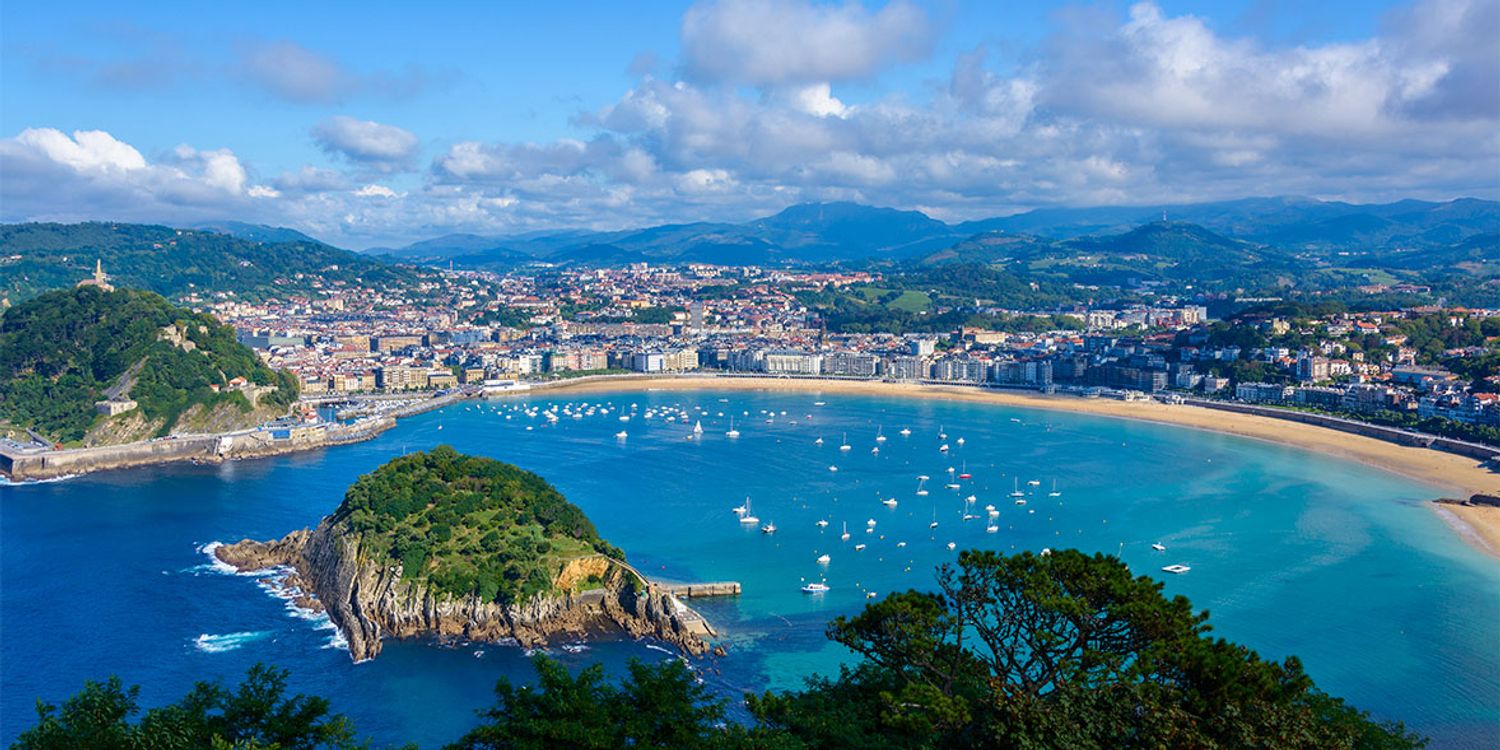Underrated Spanish Coast Towns: Discover Hidden Gems for Authentic and Peaceful Getaways
When I think of Spain’s coastline most people picture the bustling beaches of Barcelona or the lively Costa del Sol. But there’s a quieter side to the Spanish shores that’s just waiting to be discovered. Tucked away from the crowds these underrated coastal towns offer charm authenticity and a slower pace that feels like a breath of fresh sea air.
I’ve always loved exploring those hidden gems where local traditions thrive and every sunset feels like a secret. These towns might not make every travel guide but that’s what makes them special. If you’re craving a more unique Spanish escape let me show you why these overlooked spots deserve a place on your travel bucket list.
What Makes Spanish Coast Towns Unique

What-Makes-Spanish-Coast-Towns-Unique
Distinct architecture shapes every Spanish coast town, with whitewashed buildings, terracotta roofs, and narrow alleys in places like Altea or Cadaqués. Local traditions blend daily life, with fishermen mending nets along harbor walls and markets offering seasonal catches like dorada in spring and sardines in summer.
Rich cultural heritage defines these towns, from summer fiestas in Luarca to historic Moorish influences spotted in Salobreña. Community life pulses in plazas, where cafes host locals for evening chats and centuries-old churches anchor neighborhoods.
Diverse natural landscapes set each location apart, with hidden coves in Costa de la Luz, volcanic cliffs on the Canary coast, and pine-backed sand beaches near Begur. Uncrowded nature preserves and footpaths, like those in the Rías Baixas, let me explore without distraction.
Authentic cuisine—anchored by sea and land—offers specialties like fideuà in Dénia, barnacles in Galicia, and suquet in Palamós. Family-run taverns serve these regional dishes while sourcing ingredients from local fishermen and farmers.
Slower-paced lifestyles create space for connection and authenticity, free from mass tourism’s influences. Morning pastries from a village bakery or an impromptu siesta after lunch feel natural in these quieter coastal towns.
Independent creativity flourishes in art galleries, pottery studios, and folk music bars, especially along the Valencian and Andalusian coasts. I find that each Spanish coast town expresses its character distinctly, with pride in its history, food, and communal spirit.
Criteria for Choosing Underrated Towns
I select underrated Spanish coast towns by assessing their blend of natural scenery, preserved culture, and historical relevance. Each town shows distinct architecture like Cudillero’s colorful harbor houses or Begur’s colonial mansions, illustrating unique heritage and craftsmanship. Low visitor numbers distinguish these locales from crowded tourist hubs, letting traditional markets, seaside taverns, and slow-paced lifestyles remain intact. I prioritize towns that maintain authentic community activities—such as Gijón’s local food traditions or Nerja’s relaxed beaches—which deepen a sense of place. Access to pristine, minimally developed coastlines forms another key filter, ensuring places like Begur’s secluded coves and Comillas’s quiet strands retain unspoiled beauty. I value proximity to cultural monuments, like Comillas’s Gaudí masterpiece or Alicante’s Santa Barbara Castle, which connects travelers to rich historical narratives. By focusing on coastal settlements where true local character prevails and tourism hasn’t overwhelmed daily life, I highlight destinations offering quiet discovery and meaningful experiences.
Hidden Gems Along the Costa Brava
Few regions in Spain balance history, coastline, and local charm as well as the Costa Brava. I find two underrated towns here that truly stand out for their authenticity and tranquility.
Tossa de Mar
Tossa de Mar preserves medieval character along a scenic Mediterranean cove. I explore the 14th-century Villa Vella Enceinte, a walled old town crowned by a fortified castle watching over Platja Gran beach. Cobbled pathways thread through pine-shaded lanes, leading me to hidden coves and ancient towers. The Cami de Ronda walking trail skirts dramatic cliffs and reveals quiet, rocky inlets where few tourists wander, especially outside midsummer. Unlike nearby Lloret de Mar, Tossa de Mar’s narrow streets and rustic cafes maintain a laid-back feel unconcerned with mass tourism. When I stroll through the historic quarter or pause for seafood along the seafront, living Catalan heritage surrounds me.
Calella de Palafrugell
Calella de Palafrugell blends coastal scenery with small-town traditions. I hear fishermen’s boats clink in the bay while locals linger at restaurants serving classic tapas on price-coded toothpicks—a unique, unfussy touch. The town’s whitewashed houses cluster around gentle coves, and time seems to move slower along the seafront promenade. I use Calella as a base to walk stretches of the 43-kilometer Cami de Ronda, connecting unforgettable coves like Tamariu and Llafranc, each with its own character and turquoise waters. In the evenings, I enjoy streets enlivened by music, art galleries, and Catalan cuisine. Despite its proximity to stunning coastal attractions, Calella de Palafrugell retains an untouched atmosphere. Here I experience true Costa Brava culture: local gastronomy, vibrant festivals, and the peaceful rhythm of seaside life.
Lesser-Known Treasures of the Costa del Sol

Lesser-Known-Treasures-of-the-Costa-del-Sol
Traveling the Costa del Sol reveals distinct coastal towns far from the crowds of Marbella or Torremolinos. I discover authentic communities and Mediterranean beauty in towns like Nerja and Estepona, where the pace feels slower and tradition shines through.
Nerja
Nerja sits on the eastern edge of the Costa del Sol, nestled between dramatic cliffs and the Sierras de Tejeda mountains. I notice its whitewashed buildings lining narrow cobbled streets, preserving a classic Andalusian feel. The calm Mediterranean waters and hidden coves create an atmosphere that’s both scenic and peaceful, popular among visitors seeking quiet beaches like Playa de Maro or Burriana.
Chiringuitos serve fresh local seafood steps from the shoreline, and boutique shops display ceramics and crafts that reflect Nerja’s heritage. Nerja Caves, renowned for ancient rock formations and prehistoric paintings, offer an impressive underground experience that anchors the town’s cultural profile. Hiking trails trace through the coastal cliffs, giving me constant opportunities for outdoor exploration beyond the town center.
Estepona
Estepona stretches along the western Costa del Sol, blending authentic Spanish ambiance with subtle luxury. I wander flower-filled alleys and restored plazas in the old town, surrounded by whitewashed homes adorned with vibrant pots. Estepona maintains a larger population than Nerja, but everyday life here remains unhurried and deeply connected to local traditions.
Long sweeping beaches border a newly designed promenade that’s ideal for walking or cycling. Outdoor enthusiasts like myself find diverse options, from marina watersports to relaxed afternoons in shaded squares. Estepona’s proximity to Marbella and Malaga means I access lively dining or art scenes, but the town’s calm remains intact. Flowering bougainvillea, seaside chiringuitos, and traditional tapas bars reinforce why Estepona stands out as a quieter—yet still elegant—coastal destination.
Quiet Escapes on the Costa de la Luz
Underrated coast towns along the Costa de la Luz offer calm, authentic experiences rarely found in Spain’s more crowded resorts. I find these destinations combine relaxed local traditions, mesmerizing beaches, and a distinctive Andalusian flair.
Zahara de los Atunes
Zahara de los Atunes delivers an easygoing atmosphere, wide golden beaches, and a lively summer music scene. Daily life revolves around Almadraba tuna fishing, which shapes both local culture and the menu in seaside restaurants. Beachfront bars with live music events and an outdoor cinema create a vibrant community during summer evenings. Most hotels, cafes, and eateries in Zahara de los Atunes cluster close to the shoreline, keeping the small-village feel intact despite its visitor appeal. Located roughly 73 km south of Cádiz, this spot still escapes heavy tourism, making it ideal for peaceful stays.
Isla Cristina
Isla Cristina sits farther west in Huelva province, offering broad beaches and a strong fishing heritage. I notice few tourist crowds even at the height of summer, which makes local fish markets and harbor walks especially relaxing. Town traditions tie closely to the daily catch, with seafood restaurants serving dishes like grilled sardines and cuttlefish stews. Whitewashed houses line Isla Cristina’s low-key waterfront, reflecting an authentic Andalusian enclave. The tranquil pace extends inland, where green salt marshes and nature trails provide open space for slow exploration.
Discoveries on the Northern Coast
Traveling along the underrated northern coast of Spain, I discover a landscape unspoiled by mass tourism and rich in distinct local culture. These towns reward my curiosity with preserved heritage, vibrant gastronomy, and tranquil waterfronts.
Luarca (Asturias)
Luarca in Asturias reveals itself as a beautiful fishing village built along the Negro River. I find a striking blend of architecture: white fishermen’s houses press close to the harbor, contrasted by grand villas constructed for returning emigrants from Argentina, Mexico, and Cuba. Exploring Luarca’s winding streets, I see evidence of Celtic and Roman occupation, medieval palaces, and the ornate façades of “Indianos” mansions. Seven bridges cross the Negro, connecting lively quarters with the working port and inviting seafood markets. Viewing the town from the Atalaya Chapel’s observation deck, I take in sweeping panoramas of both river and rugged coastline. The Barbacana promenade and stretches of sandy beach provide quiet escapes, reinforcing Luarca’s reputation as one of Asturias’ most picturesque yet less crowded seaside towns.
Getaria (Basque Country)
In Getaria, Basque sailing and fishing tradition shape daily life. Located about 80 km east of Bilbao, the town’s small scenic harbor and preserved old quarter reflect centuries of maritime heritage. I encounter a monument honoring Juan Sebastián Elcano, the world-circumnavigating explorer born here. Getaria’s beachfront and cobbled streets bustle with local fishers and wine growers. Seafood restaurants serve grilled turbot and anchovies caught just offshore. Txakoli, the local white wine, pairs perfectly with the catch of the day, highlighting the region’s culinary strengths. Despite its proximity to San Sebastián, Getaria offers a quieter experience, making it ideal for travelers in search of authentic Basque coastal culture without the tourist influx.
Tips for Visiting Underrated Spanish Coast Towns

Tips-for-Visiting-Underrated-Spanish-Coast-Towns
Exploring underrated Spanish coast towns calls for a few practical strategies. I prefer renting a car to reach hidden places like Begur’s coves or O Vicedo’s beaches, since public transport rarely covers the most secluded areas. Planning my visit outside peak summer months—usually May, June, or September—helps me avoid crowds and truly experience the region’s calm ambiance.
Sampling local cuisine stands out as a highlight in these coastal villages. I prioritize fresh seafood at family-run taverns and order regional specialties like Empordà wine in Begur or Valor chocolate in Villajoyosa for a genuine taste of traditions. I always respect village customs by greeting locals and observing siesta hours; it fosters positive interactions and deepens cultural experiences.
I choose guesthouses or small, locally-owned hostels when staying overnight, as luxury hotels are rare and large resorts detract from the intimate feel. I value mornings on tranquil beaches like those in Agua Amarga or evenings wandering quiet alleys in Cudillero, using sun protection and checking water conditions to ensure safety.
Immersing myself in local life means attending markets or community events—often lively but never crowded. I make time for long, relaxed lunches and afternoon walks along scenic routes like Cadaqués’ coastal paths. Experiencing these towns at a slow pace lets me appreciate their authentic charm and encourages mindful tourism.
Conclusion
Every time I wander through Spain’s lesser-known coastal towns I’m reminded how rewarding it is to step off the beaten path. These places invite me to slow down and connect with the heart of local culture in ways that crowded resorts simply can’t offer.
If you’re craving a travel experience filled with genuine moments and unspoiled scenery you’ll find it in these hidden gems. Spain’s underrated coastlines are waiting to surprise you with their authenticity warmth and quiet beauty.
Frequently Asked Questions
What are some underrated coastal towns in Spain worth visiting?
Spain is home to many underrated coastal towns like Tossa de Mar, Calella de Palafrugell, Nerja, Estepona, Zahara de los Atunes, Isla Cristina, Luarca, and Getaria. These towns offer authentic local culture, fewer crowds, beautiful beaches, and unique architecture, making them perfect for a quieter and more meaningful travel experience.
How do these lesser-known towns differ from popular destinations like Barcelona or Costa del Sol?
Unlike major tourist hotspots, these towns maintain a slower pace, local traditions, and smaller crowds. You’ll find more authentic community life, unique regional cuisine, traditional festivities, and preserved historic charm. The focus is on genuine experiences rather than mass tourism.
What makes the architecture of these towns unique?
Many of these towns feature whitewashed houses, narrow alleys, colorful harbors, and distinctive historical buildings. Their architecture reflects local heritage and centuries-old craftsmanship unique to each region, such as Cudillero’s multicolored homes or Begur’s colonial mansions.
Are these destinations suitable for families or couples?
Yes, these coastal towns are great for both families and couples. They offer safe beaches, family-run taverns, scenic walking trails, and relaxed atmospheres. Couples will also appreciate the tranquil setting, beautiful sunsets, and authentic local dining experiences.
What types of local cuisine can I expect in these coastal towns?
You can expect fresh seafood, regional specialties, and simple, traditional dishes. Many towns have fishermen bringing in daily catches, which are served at local taverns and seaside restaurants. In the north, try Txakoli wine; in the south, taste tuna from Almadraba fishing.
How can I best experience the culture in these towns?
Immerse yourself by exploring local markets, attending community fiestas, and visiting art galleries. Dining in family-run taverns and joining village events also provide genuine insights into daily life and cultural traditions.
When is the best time to visit these towns to avoid crowds?
The best times are during the shoulder seasons—late spring (May-June) and early fall (September-October). These months offer pleasant weather and fewer tourists, allowing for a more peaceful and authentic experience.
Do I need a car to explore these coastal areas?
While some towns are accessible by public transport, renting a car gives you more flexibility to visit secluded coves, scenic cliffs, and less accessible villages. A car provides greater freedom, especially if you want to explore multiple locations.
What kind of accommodations are available?
You’ll find a range of accommodations, including charming guesthouses, small boutique hotels, family-run hostels, and coastal apartments. Staying in smaller lodgings often enhances the feeling of intimacy and local connection.
Are there specific activities or attractions unique to these towns?
Yes, each town has its own special activities—such as hiking the Cami de Ronda in Costa Brava, exploring the Nerja Caves, enjoying summer music events in Zahara de los Atunes, or tasting Txakoli wine in Getaria. Each place offers its own blend of nature, culture, and local traditions.
How can travelers support local communities when visiting?
Travelers can support local communities by eating at family-run restaurants, shopping at village markets, participating in local festivals, respecting customs, and choosing small, locally owned accommodations. Mindful tourism helps preserve the area’s culture and character.
